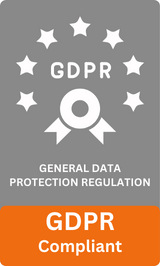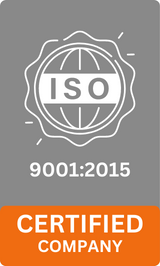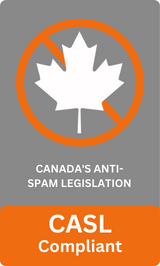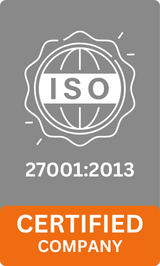“The goal is to turn data into information, and information into insight.” — Carly Fiorina
Lead distribution is the process of allocating incoming sales leads to the most appropriate sales representative or team, based on various criteria such as geography, product interest, lead score, and more. In the B2B marketing space, efficient lead distribution is critical as it ensures leads are followed up promptly, maximizing the chance of conversion.
B2B businesses thrive on leads—whether from inbound marketing efforts, paid advertising, or organic referrals. The effectiveness of these leads heavily depends on how they are distributed. Poor lead channeling can result in missed opportunities, wasted resources, and a frustrated sales team. Efficient lead distribution, on the other hand, drives success by ensuring that leads are handled in a timely and strategic manner, leading to better sales outcomes.
1# Why Lead Distribution Matters in B2B Lead Generation
For B2B companies, an efficient lead distribution system directly impacts core business functions like sales growth, customer acquisition, and ROI. Lead segmentation helps allocate resources effectively, making sure high-priority leads are given attention promptly while less qualified leads are nurtured accordingly. Research shows that 78% of businesses that use automated lead distribution systems report a significant increase in lead conversion rates.
2# What Is Lead Distribution?
Lead distribution refers to the organized process of assigning potential clients (leads) to specific salespeople or teams within an organization. This system typically relies on preset criteria like lead score, geographic region, or product interest, ensuring that each lead is handled by the most appropriate resource.
Types of Lead Distribution Methods
Manual Lead Distribution: Pros and Cons
In manual lead allocation, sales managers or marketing teams are responsible for distributing leads based on their judgment. While this method offers flexibility, it also introduces the risk of human error, slow response times, and inefficiency. Small-scale businesses with fewer leads might benefit from manual distribution, but as lead volume increases, manual assignment can become unmanageable.
Automated Lead Distribution: How Technology Improves Efficiency
Automated lead allocation uses CRM systems or lead management tools to automatically assign leads based on predefined rules. These rules can be based on criteria like lead score, geography, industry, and sales rep availability.
The biggest advantage of automated systems is the speed and consistency they bring to lead assignment. Automated distribution ensures that leads are always assigned to the right sales representative at the right time, eliminating delays and improving the chances of closing deals.
Key Components of a Lead Distribution System
- Lead Sources: Where leads originate from (email marketing, social media, paid ads, etc.).
- Lead Scoring: Lead scoring is a system that evaluates leads based on their likelihood to convert, ensuring high-quality leads are prioritized.
- Assignment Rules: Criteria used to route leads to the appropriate sales representative or team.
3# The Role of Lead Distribution in B2B Success
Aligning Sales and Marketing Teams
A smooth lead channeling process ensures alignment between marketing and sales teams. When marketing generates qualified leads, they need to be swiftly handed over to sales. A well-structured lead allocation system ensures marketing efforts aren’t wasted and sales have a steady pipeline of qualified leads.
Improved Lead Response Time
According to research, businesses that respond to leads within an hour are seven times more likely to qualify that lead than those who wait longer. With automated lead distribution, the time between lead generation and follow-up is minimized, improving overall lead response time. This swift response can significantly enhance conversion rates.
Optimizing Resource Allocation
Lead distribution allows businesses to allocate resources more effectively by ensuring that leads are assigned based on relevance, not randomness.
For example, if a lead is interested in a specific product line, it can be assigned to a salesperson with expertise in that area, increasing the chance of closing the deal.
In large B2B organizations, this method optimizes the sales team’s workload and boosts overall productivity.
Increased Sales Efficiency and Productivity
Sales teams can focus their efforts on high-quality leads when they are prioritized and distributed efficiently. This approach reduces the risk of lead leakage—where potential customers slip through the cracks—and enhances overall sales efficiency.
4# Manual vs. Automated Lead Distribution: Which Is Better?
Manual Lead Distribution
Manual lead allocation might work for smaller businesses with a limited number of leads. It poses several challenges, including:
- Human Error: Leads can be incorrectly assigned or missed altogether.
- Inefficiency: Manual systems are time-consuming and can cause delays in lead response.
For businesses aiming to scale their lead generation and sales processes, manual distribution becomes a bottleneck, hampering growth.
Automated Lead Distribution
Automated lead distribution is ideal for larger B2B organizations handling high lead volumes. Key features include:
- CRM Integration: Seamlessly integrating with customer relationship management tools for streamlined assignment.
- Lead Scoring: Assigning leads based on how likely they are to convert, allowing sales teams to focus on high-value prospects.
- Round-Robin Assignment: Ensuring an even distribution of leads to avoid overloading specific sales reps.
The benefits of automation for large-scale B2B businesses are clear. With automation, businesses can scale more easily, improve lead follow-up times, and ensure consistency in the lead assignment process.
5# Benefits of Using Lead Distribution Software
Faster Lead Assignment
One of the key benefits of using lead channeling software is the speed of assigning leads to sales teams. Automation ensures that as soon as a lead enters the system, it is routed to the appropriate salesperson in seconds.
Higher Lead Conversion Rates
Faster lead assignment and a structured approach to lead scoring and routing enable businesses using lead distribution software to achieve higher conversion rates. Targeting the right leads with the appropriate resources maximizes the efficiency of the sales funnel, ensuring that potential customers are handled more effectively.
Improved Sales Forecasting
Lead distribution tools often come with analytics features that provide real-time data, helping businesses forecast future sales more accurately. This visibility enables companies to adjust their strategies based on actual data rather than guesswork.
Enhanced Reporting and Analytics
Lead distribution software provides insights into key metrics such as lead status, conversion rates, and individual sales rep performance. These insights are crucial for continuous optimization of sales processes.
6# Best Practices for Effective Lead Distribution
Lead Scoring and Segmentation
An effective lead distribution system begins with a solid lead scoring and segmentation strategy. By assigning scores to leads based on factors such as behavior, engagement, and fit, companies can ensure high-priority leads are sent to the most capable sales reps.
Routing Leads to the Right Salespeople
Leads should be routed based on the salesperson’s expertise, product knowledge, and geographic location. Matching the right lead with the right rep increases the likelihood of conversion.
Establishing Clear Lead Assignment Rules
Lead assignment rules should be based on criteria such as industry, company size, and product interest. Clear, customizable rules make the distribution process more efficient and ensure leads are handled properly.
Using CRM and Automation Tools
Integrating CRM and lead assignment software ensures seamless lead management, eliminating manual processes and reducing errors. CRM integration also enables tracking of leads throughout their lifecycle.
Tracking and Measuring Lead Performance
Businesses should continuously monitor the performance of their lead assignment process. Tracking metrics like conversion rates, response times, and lead follow-up can help identify areas for improvement.
7# Common Challenges in Lead Distribution and How to Overcome Them
Lead Overload for Sales Teams
Sales teams can become overwhelmed if too many leads are assigned too quickly. To avoid this, businesses can implement round-robin distribution or lead capping mechanisms to ensure balanced workloads.
Lead Leakage
Lead leakage occurs when leads fall through the cracks due to inefficiencies in the distribution process. Automated systems help prevent this by ensuring every lead is accounted for and followed up on.
Inconsistent Lead Qualification
Lead scoring inconsistencies can result in unqualified leads being prioritized. Ensuring a standardized and objective lead scoring process helps maintain quality in lead segmentation.
Slow Response Time
Slow follow-up can result in lost opportunities. To speed up response times, businesses should use automated routing systems that assign leads immediately and set reminders for prompt follow-up.
8# The Future of Lead Distribution in B2B Marketing
AI-Powered Lead Segmentation
Artificial intelligence (AI) is set to transform lead routing by making the process smarter and more predictive. AI can analyze data to determine which leads are most likely to convert and assign them accordingly.
Predictive Lead Routing
Predictive analytics uses historical data and machine learning to anticipate which leads are most valuable, enabling businesses to assign them strategically for maximum conversion potential.
Omni-Channel Lead Distribution
In an increasingly digital world, leads come from multiple channels, including social media, email, and phone. Omni-channel lead distribution ensures that no matter where the lead originates, it is assigned to the right sales rep through the appropriate platform.
9# How to Choose the Right Lead Distribution System for Your B2B Business
Factors to Consider
When choosing a lead allocation system, businesses should evaluate the scalability of the system, its CRM integration capabilities, and whether it offers customizable lead scoring and routing rules.
Popular Lead Channeling Tools for B2B Companies
Several tools, including Salesforce, HubSpot, and Zoho CRM, are well-regarded for their lead segmentation capabilities. These platforms offer automated lead routing, lead scoring, and detailed analytics features to streamline the sales process.
Customizable Features to Look For
When selecting a lead distribution tool, businesses should look for customizable routing rules, reporting features, and automation capabilities that suit their specific needs.
Conclusion
Lead distribution is essential for maximizing B2B lead generation. By efficiently assigning leads, businesses can significantly enhance their conversion rates and overall sales performance. Implementing the right lead allocation system ensures leads are not only generated but also nurtured effectively.
Automation and CRM integration streamline the lead management process, reduce response times, and increase the chances of closing deals. In today’s competitive B2B landscape, a well-structured lead segmentation strategy is essential for driving growth and success.
I hope you find the above content helpful. For more such informative content please visit Sales-Demand.
Related Posts
AI-Powered Lead Generation – How AI is Transforming Sales
Lead generation has always been at the core of sales and marketing strategies, but with the rise of technology, businesses are constantly seeking smarter, more effective ways to identify, engage, and...
How to Use Content Engagement to Boost Your B2B Marketing Strategy
These days, “content engagement” isn’t just a trendy phrase; it’s necessary for a successful B2B marketing plan. With countless businesses competing for attention in the noisy digital space, creating...







